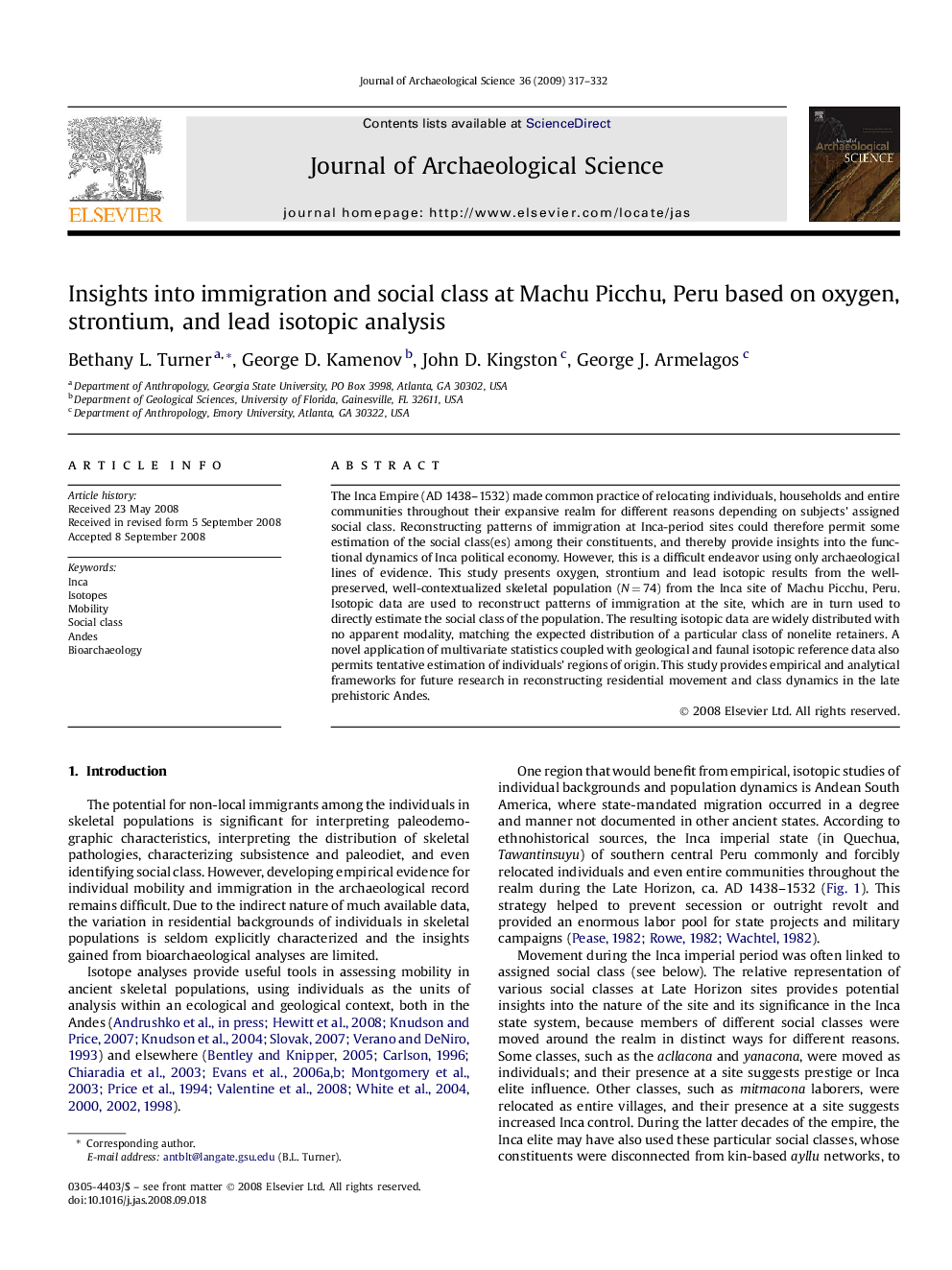| کد مقاله | کد نشریه | سال انتشار | مقاله انگلیسی | نسخه تمام متن |
|---|---|---|---|---|
| 1036243 | 943880 | 2009 | 16 صفحه PDF | دانلود رایگان |

The Inca Empire (AD 1438–1532) made common practice of relocating individuals, households and entire communities throughout their expansive realm for different reasons depending on subjects' assigned social class. Reconstructing patterns of immigration at Inca-period sites could therefore permit some estimation of the social class(es) among their constituents, and thereby provide insights into the functional dynamics of Inca political economy. However, this is a difficult endeavor using only archaeological lines of evidence. This study presents oxygen, strontium and lead isotopic results from the well-preserved, well-contextualized skeletal population (N = 74) from the Inca site of Machu Picchu, Peru. Isotopic data are used to reconstruct patterns of immigration at the site, which are in turn used to directly estimate the social class of the population. The resulting isotopic data are widely distributed with no apparent modality, matching the expected distribution of a particular class of nonelite retainers. A novel application of multivariate statistics coupled with geological and faunal isotopic reference data also permits tentative estimation of individuals' regions of origin. This study provides empirical and analytical frameworks for future research in reconstructing residential movement and class dynamics in the late prehistoric Andes.
Journal: Journal of Archaeological Science - Volume 36, Issue 2, February 2009, Pages 317–332